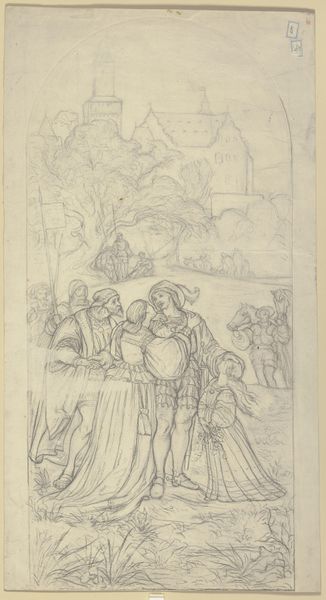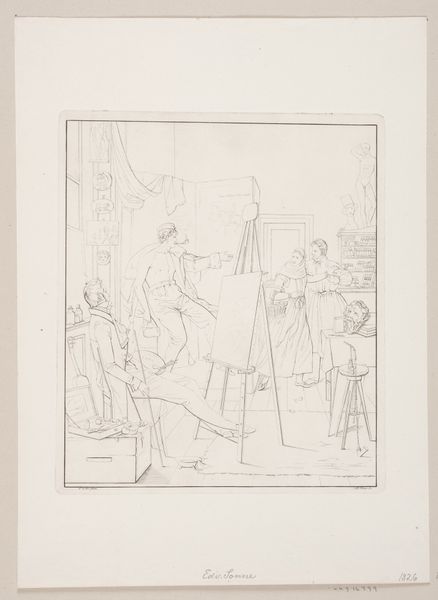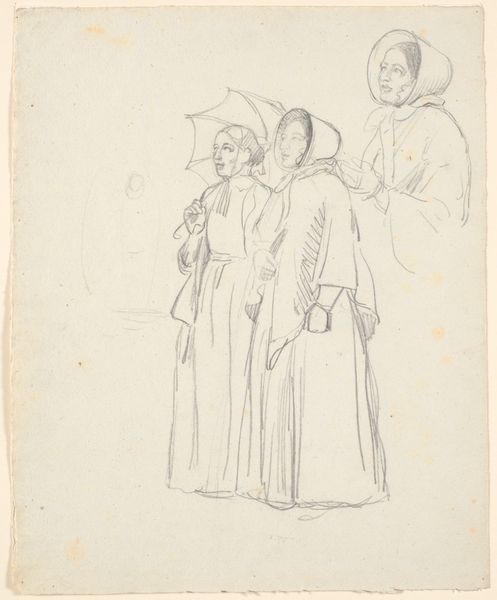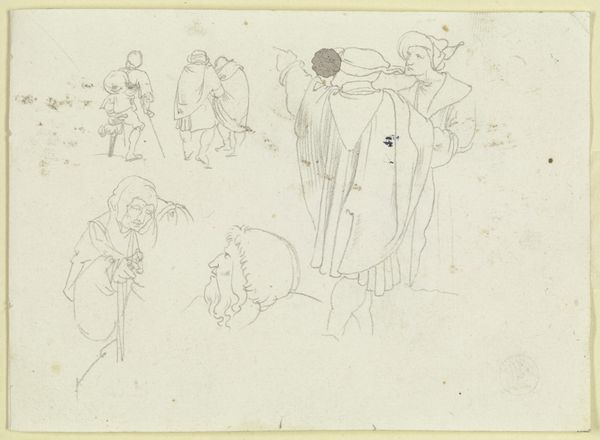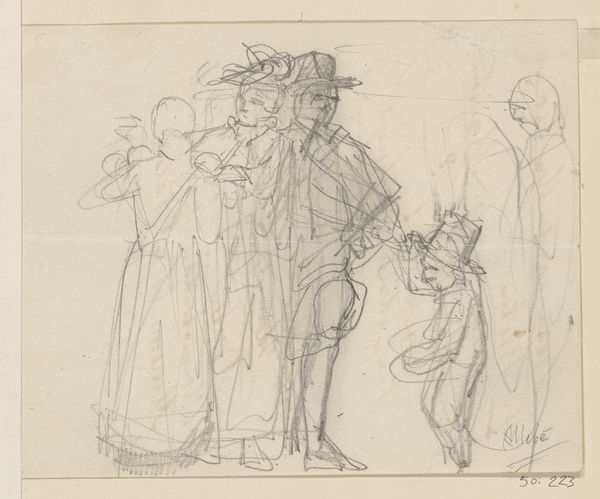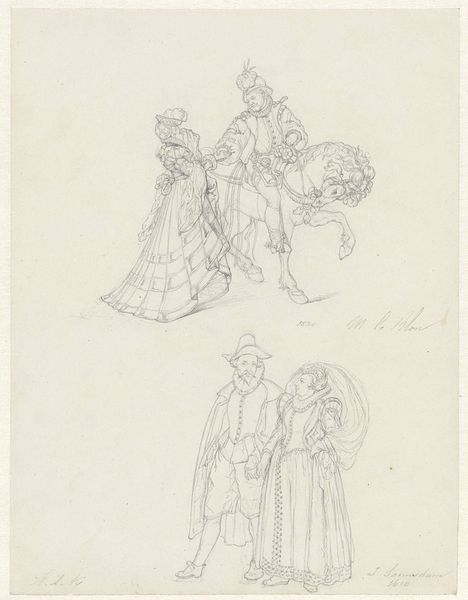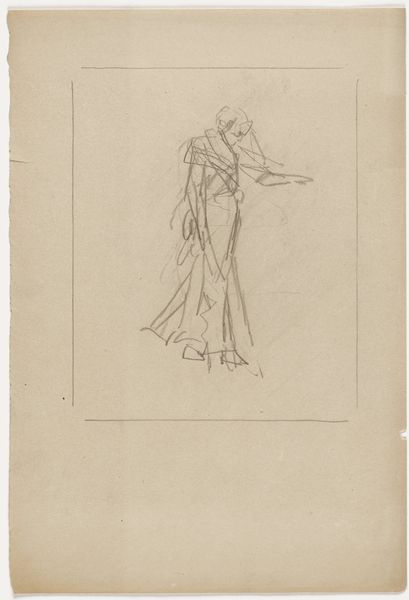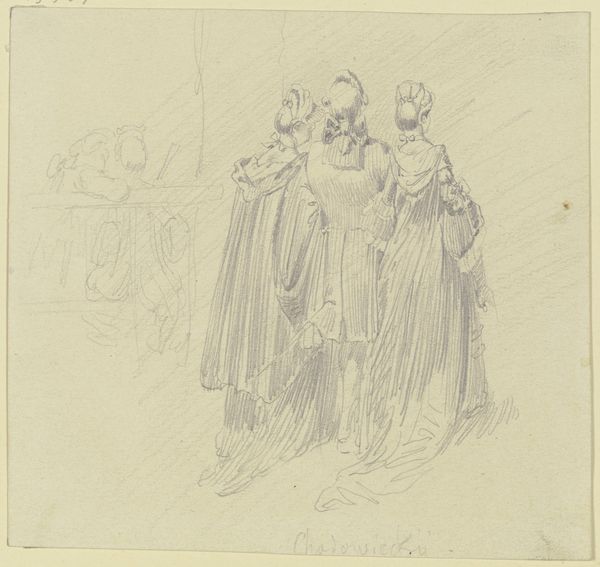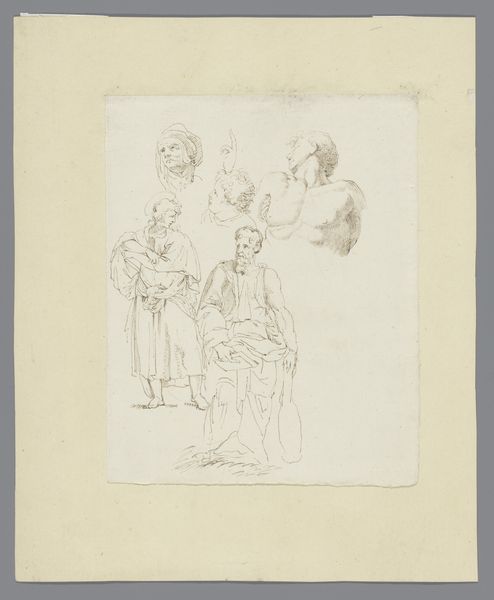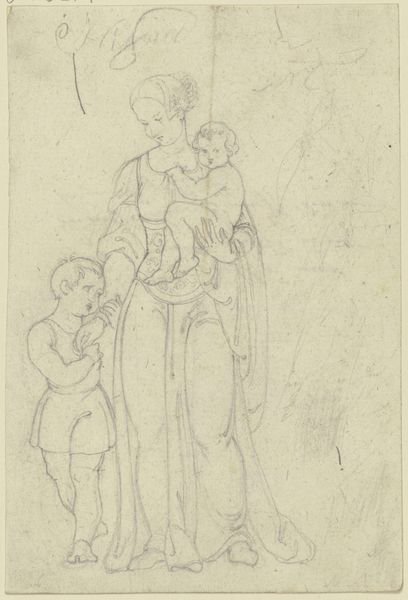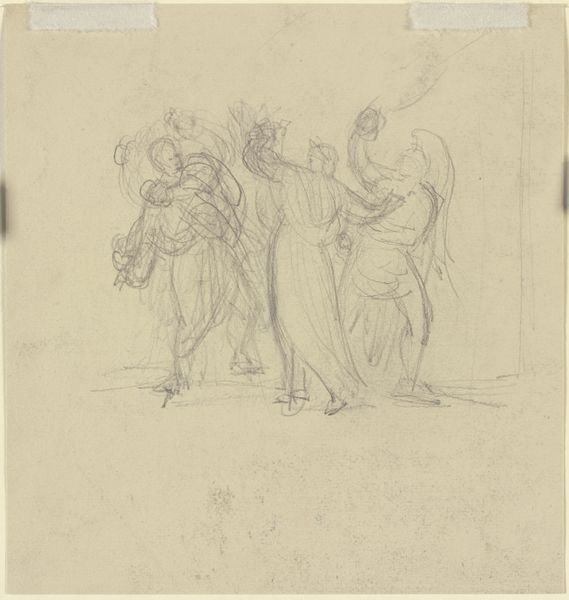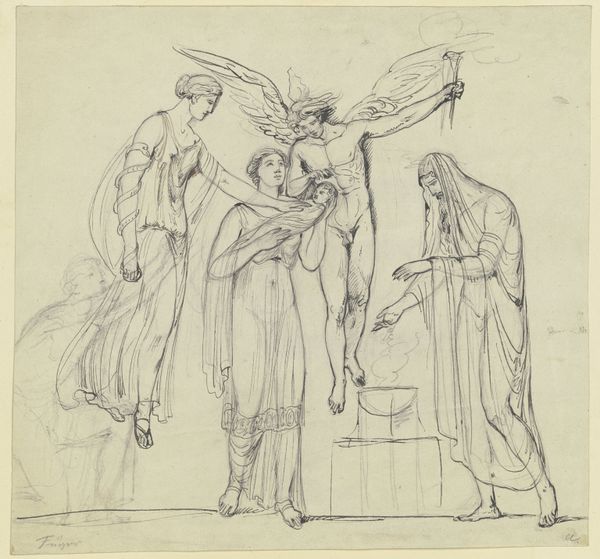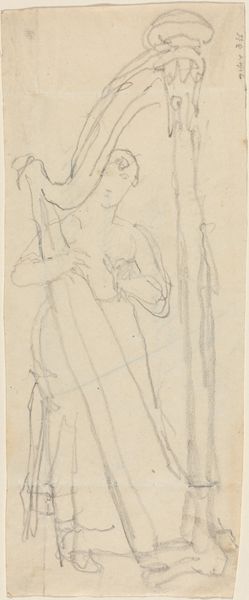
Ontwerp voor wandschildering in de Beurs van Berlage: binnenkomst van de drie maagden Werkzaamheid, Gezelligheid en Wijsheid, achter een rots Mercurius c. 1869 - 1925
0:00
0:00
drawing, pencil
#
drawing
#
figuration
#
pencil
#
history-painting
#
academic-art
Dimensions: height 324 mm, width 250 mm
Copyright: Rijks Museum: Open Domain
Curator: Welcome to this study for a mural by Antoon Derkinderen, titled "Design for a Mural in the Beurs van Berlage: Entry of the Three Maidens Activity, Sociability, and Wisdom, Behind a Rock Mercury," created between about 1869 and 1925. Editor: My initial thought is that the subtle pencil work almost romanticizes labor; the textures and tonalities grant them this ethereal weight, no? Curator: The ethereal quality definitely stands out. Look at the precise linework used to define the figures, emphasizing an idealized representation through classic academic techniques. This aligns with the aspiration to ennoble civic values—the qualities of industry embodied by these maiden figures, emerging behind Mercury. Editor: How much of the "labor" element is down to the literal labour put in to producing the work? I'm interested in the contrast between the artistic rendering and the values it’s supposed to celebrate. Also, pencil, especially graphite at the time, leaves its own mark. There’s the smooth application to the faces but these light scratchy marks around the flowing robes. Curator: Precisely. The pencil medium, with its capacity for nuanced detail and shading, serves not merely as a preparatory tool but as an integral component of the aesthetic impact. Editor: Absolutely! These pencil sketches expose how labor is glorified but removed from real labor... which is an intrinsic contradiction within the work itself. How does that contradiction fit into the function of Berlage as an active stock exchange building and, basically, as a place for capitalists? Curator: Derkinderen subtly mediates, by adopting an allegorical vocabulary rooted in tradition yet hinting at a modern ethos of progress, which echoes both the classic themes and changing realities within a modernized economy. Editor: Thank you, I can appreciate the work with new insights on process and materiality that frame historical labor, not as just figures to glorify capitalism, but instead the artist and laborer coming together! Curator: It reveals layers within this fascinating synthesis, so viewers understand Derkinderen as bridging traditions.
Comments
No comments
Be the first to comment and join the conversation on the ultimate creative platform.
